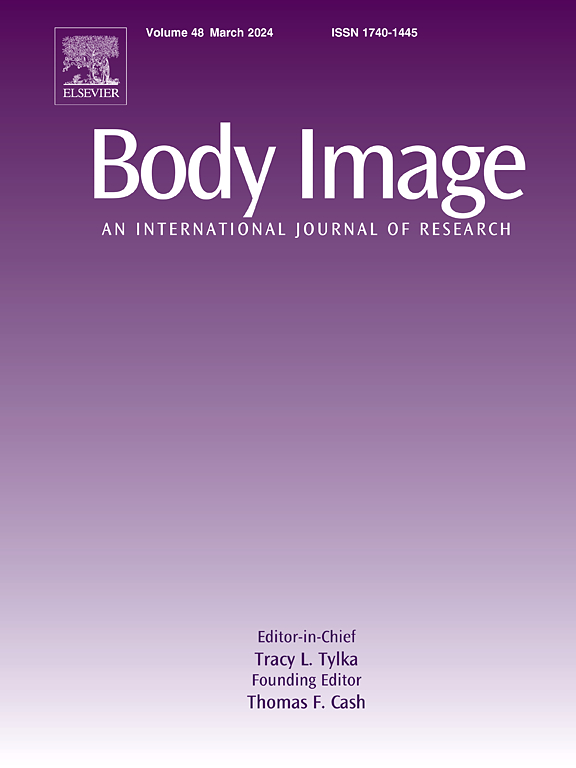Representation matters: Exposure to advertisements featuring models with different skin shades affects body image, well-being and advertising effectiveness among South Asian Women in the UK
IF 5.4
1区 心理学
Q1 PSYCHIATRY
引用次数: 0
Abstract
Racialised appearance ideals displayed in media and advertising imagery privilege white or light skin. Yet, little research has tested how white or light skin ideals in advertising influence body image. In this online experimental study, South Asian women in the UK (N = 194, Mage = 28.6 years) recruited via Prolific, were randomly assigned to view advertisements that featured either South Asian women with dark skin, South Asian women with light skin, White women, or products only. Dependent variables included appearance and skin shade satisfaction, mood (feeling confident, inspired, anxious, depressed), and advertising effectiveness. Repeated measure ANOVAs and post-hoc analyses showed that viewing White models reduced participants’ skin shade satisfaction and lowered their confidence. Exposure to advertisements with South Asian models with dark skin increased the extent to which women felt inspired, while exposure to advertisements with South Asian models with light skin increased appearance satisfaction. Exposure to either of the South Asian models reduced women’s anxiety. Our results present compelling evidence that representation matters – in terms of body image and wellbeing as well as advertising effectiveness. As little experimental work has been conducted on skin shade representation in advertising on body image outcomes, we outline several important future directions.
代表性很重要:在英国,接触不同肤色模特的广告会影响南亚女性的身体形象、幸福感和广告效果
在媒体和广告形象中展示的种族化的外貌理想是白人或浅色皮肤的特权。然而,很少有研究测试广告中理想的白皙或浅色皮肤是如何影响身体形象的。在这项在线实验研究中,通过多产网站招募的英国南亚女性(N = 194,年龄= 28.6岁)被随机分配观看深色皮肤的南亚女性、浅色皮肤的南亚女性、白人女性或只有产品的广告。因变量包括外貌和肤色满意度、情绪(自信、受鼓舞、焦虑、抑郁)和广告效果。重复测量方差分析和事后分析表明,观看白人模特会降低参与者对肤色的满意度,降低他们的信心。看到深色皮肤的南亚模特的广告会增加女性的灵感,而看到浅色皮肤的南亚模特的广告会增加女性对外表的满意度。接触任何一个南亚模特都会减少女性的焦虑。我们的研究结果提供了令人信服的证据,表明形象很重要——就身体形象和健康以及广告效果而言。由于很少有实验工作进行肤色表示在广告对身体形象的结果,我们概述了几个重要的未来方向。
本文章由计算机程序翻译,如有差异,请以英文原文为准。
求助全文
约1分钟内获得全文
求助全文
来源期刊

Body Image
Multiple-
CiteScore
8.70
自引率
28.80%
发文量
174
期刊介绍:
Body Image is an international, peer-reviewed journal that publishes high-quality, scientific articles on body image and human physical appearance. Body Image is a multi-faceted concept that refers to persons perceptions and attitudes about their own body, particularly but not exclusively its appearance. The journal invites contributions from a broad range of disciplines-psychological science, other social and behavioral sciences, and medical and health sciences. The journal publishes original research articles, brief research reports, theoretical and review papers, and science-based practitioner reports of interest. Dissertation abstracts are also published online, and the journal gives an annual award for the best doctoral dissertation in this field.
 求助内容:
求助内容: 应助结果提醒方式:
应助结果提醒方式:


